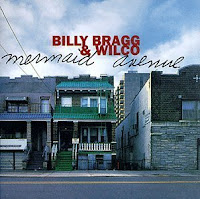Elvis Presley
Elvis Presley was born on 8th January 1935 in Tupelo, Mississippi. He was the only child of a Christian working-class family. He received his first guitar at the age of 11. When he was 13 years old, they moved to Memphis, Tennessee. Elvis had a very close bond with his mother so, in 1958, when she became ill and died a few days later, Elvis was devastated.
What aspects of Elvis’ career made him so famous and even “immortal”?
First of all, many of his songs are never-ending classics. The genres Elvis sang were rock-and-roll, pop, blues, country, gospel, rockabilly and R&B. But he did not write most of his songs himself. He did write a couple though, such as "You'll be gone", which was the last song he wrote. “Can't Help Falling in Love” (blues) is one of his most famous love songs. “Jailhouse Rock” (rock-and-roll) was used for a movie that takes place in a prison. “Always On My Mind” was originally a country song written by Wayne Carson and his band, which Elvis covered.
"Can't help falling in love "
"Jailhouse Rock"
"Always On My Mind"
Secondly, Elvis was seen as a sex symbol because he was good-looking and his performances were charismatic.
The wild haircut, known as “La Banane”, was part of the persona he developed. An interesting fact is that the charming, dark-haired man we know used to have blond locks.
Despite his achievements as a singer, Elvis’ dream was to become a motion-picture actor. Still, he was never considered as a real actor because he always had a singing part in the films he made. Love me tender, his most famous movie, is a family drama.
"Love me tender"
Elvis’ career had its ups-and-downs. The songs he released in 1967 and 1968 were not very popular. In 1968, Elvis negotiated to make a Christmas special. It was Elvis’ first live performance after 7 years of absence.
During his life, The King, as was his nickname, won three Grammy awards for gospel music. He is still regarded as one of the most important figures in the popular culture of the 20th century.
Furthermore, Elvis entered the U.S. Army in 1958 and was sent to Germany after his training. He stayed in the army until 1960, when he was discharged.
Elvis had good memories of his military service in Germany because that is where he met Priscilla Beaulieu, the love of his life, when she was only 14. They married in 1967 in Las Vegas. Nine months later, she gave birth to their daughter, Lisa Marie Presley. Unfortunately, they divorced in 1973 and his health started to deteriorate due to his drug intake. He had drug problems, problems of obesity and an enlarged colon. He died of cardiac arrhythmia on 16th August 1978 at the age of 42. At the end of his life he weighed 102 kg. At the autopsy, the forensics found traces of 14 different medicines in his blood. His gravestone is in the garden of his house, Graceland, and can be seen by tourists.
Elisa Etienne, Morgane Lemaitre, and Ophélie Malcolm

























